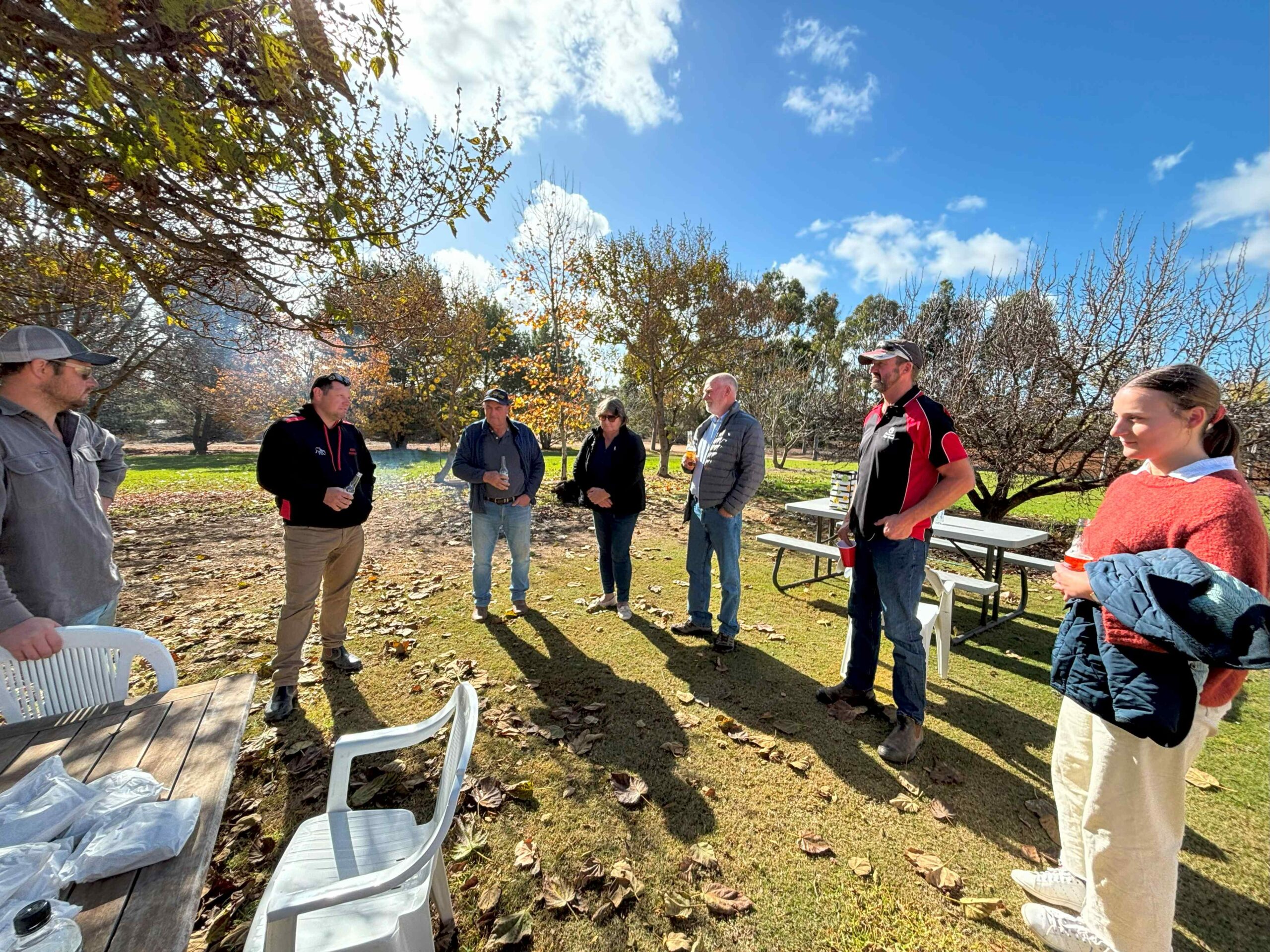Novel technologies and practices for the optimisation of pollination within protected cropping environments
22 August 2024
Unique climate creates opportunities and challenges for NT vegetable growing
30 August 2024The onion levy fund supported the visit of USA researcher Dr Daniel (Dan) Drost to visit Australia to share his expertise on nutrition and weeds management in onion crops.
Dr Dan Drost is Professor Emeritus of Horticulture and former Extension Vegetable Specialist in the Department of Plants, Soils and Climate at Utah State University.
Dan and his family moved to Utah in 1992 after he was appointed the Vegetable Specialist for Utah State University. Since then he has helped Utah’s vegetable industry remain competitive and sustainable. Dr Drost’s responsibilities include efforts in extension, research and teaching that addresses plant growth and crop production issues that impact Utah’s commercial vegetable farms. He worked extensively with Utah’s onion industry to combat onion thrips, iris yellow spot virus, and improve their irrigation management. He was part of several national onion research programs that addressed common problems for all onion growers. He has shared these finding with onion producers in England, Germany, New Zealand, and across all important onion growing regions in the United States.
Dr Drost’s discussions and presentation during Hort Connections focused on four core topics of crop management:
- Insect threats and control strategies.
- Weeds and crop Interactions.
- Nutrition connections.
- Water management.
The spectrum of conversation and presentation during Dr. Drost’s visit covered off on subjects that form the programming of the onions communications and extension program. Identification of the key focus areas are the result of a needs analysis consultation by the project team led by Zarmeen Hassan from AUSVEG and endorsed by the regional grower groups constituted by growers and agronomists.
Growers hear from Dr Dan Drost during the Onion Tour held in June 2024
Dr Drost also shared his perspective from a global stage and highlighted issues that he sees the global industry facing. In his opinion, some of the bigger concerns facing the US and world onion producers continue to be labour, climate uncertainty, increasing production costs, and harvest consistency.
Dr Drost said that labour will always be an issue so finding ways to stabilise production from year to year can help growers better manage their existing labour. Climate uncertainty (colder/hotter/wetter/drier) can lead to plant stress that impacts leaf number and size which directly impacts bulb development. How growers manage the crop throughout the season can have a significant influence on harvest consistency and quality. Importantly, with a good understanding of plant physiology, farm management practices (fertiliser, water, pest management) are optimised and this helps keep costs in check. When costs are contained and growth optimised, a superior product is grown that provides for economic sustainability.
Sharing his USA experience, Dr Drost highlighted that onion (Allium cepa L.) is the third most consumed vegetable in the U.S.; is grown on 130,000 acres across the country (yield: 547 cwt/acre), has a farm-gate value of nearly $USD1.5 billion per year, with a per capita consumption of about 9 kg per year. Furthermore, 20 percent of the world’s onion seed (>$100 million/year value) is produced in the US.
Onion crops are damaged by a spectrum of pests and pathogens. Onion thrips are the most serious pest and these feed on onion leaves causing significantly reduced onion bulb yield and quality (30-50 percent). Thrips rapidly develop resistance to insecticides and spread plant pathogens like iris yellow spot virus (IYSV) that further reduce bulb yield/quality and seed production. Furthermore, a variety of fungal and bacterial pathogens (the most serious are Stemphylium leaf blight (SLB), purple blotch (PB), downy mildew (DM), black mould, Botrytis leaf blight (BLB)/blast and neck rot, Fusarium basal rot (FBR), pink root, white rot, powdery mildew, sour skin, slippery skin, centre rot, leaf streak, soft rots, and Enterobacter bulb decay) cause additional onion yield losses in field and storage facilities.
Each disease can cause crop losses of 25-100 percent. Growers in some of the historical production regions in the U.S. have abandoned onion farming because of losses caused by these organisms. Stakeholders in the US have identified thrips, IYSV, and many of these fungal and bacterial pathogens as significant threats to the sustainability of the onion industry. Allium researchers from across the U.S. formally organised the National Allium Researchers Conference (1985) to discuss and address recurring problems facing onions and other allium crops. These meetings helped address recurring issues impacting onions.
As part of the Onion project Dr Drost joined delegates to grower visits for one-on-one engagement with South Australian and Tasmanian onion growers. This really was an opportunity to bring growers and research together on farm, where they were able to show the nutrition and weed challenges on farm and have discussion, advice and expertise from Dr. Drost.
A grower group meeting was arranged with agronomists and growers at Forthside at the Tasmanian Institute of Agriculture where he discussed how minor adjustments in production strategies can support management of issues.
The presentation and grower visits focused on how landscape diversity, minor changes in production strategies, and unique farm innovations lead to better understanding of common problems and pioneering solutions that are easily adopted by growers in Australia and world-wide.
As part of the monitoring and evaluation of the program, this inbound study tour was perceived as a valuable event for the onion growers that participated and will be followed by an outgoing tour for the growers during the next twelve months.



